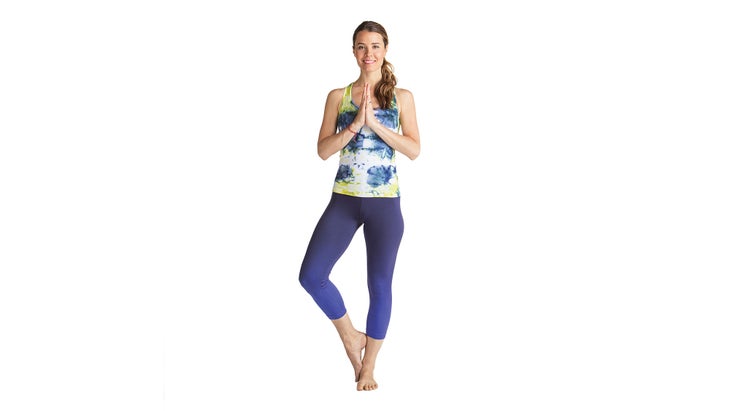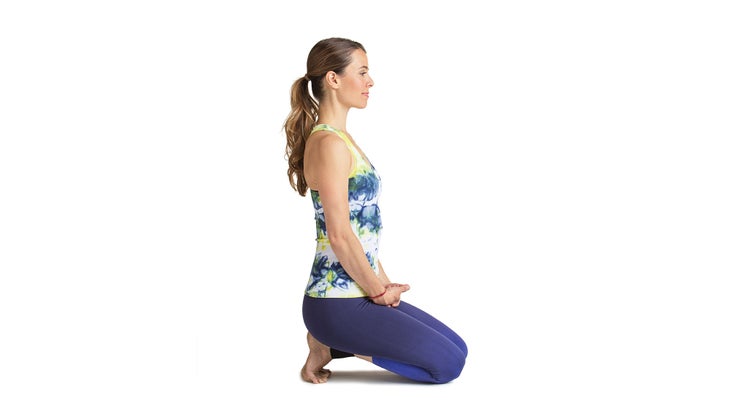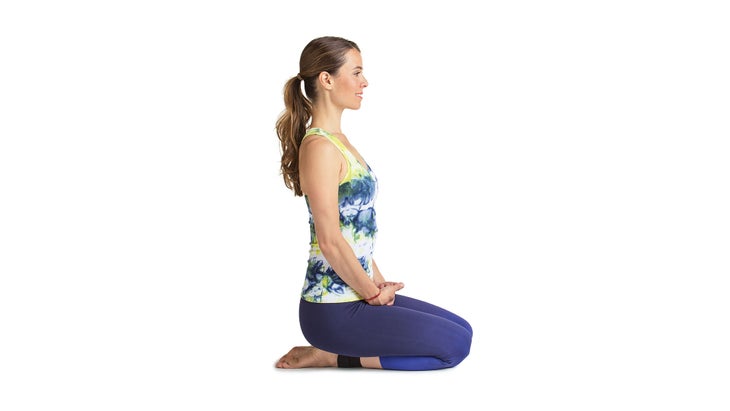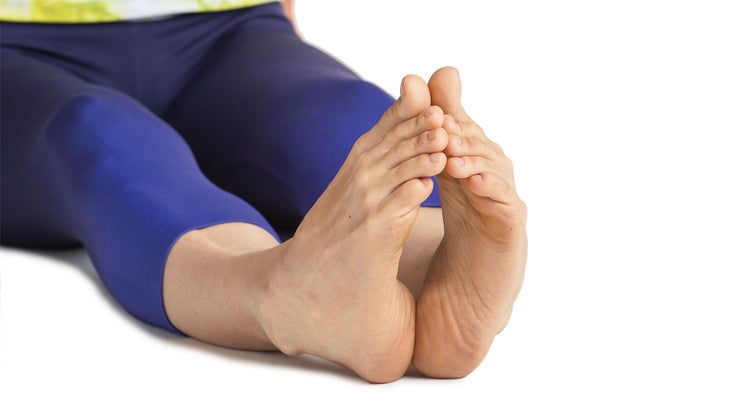
Your yoga practice is an excellent way to give your ankles the attention they deserve, helping to reverse past damage and keep you injury free for years to come.
Vrksasana Tree Pose, variation

Standing on one leg improves balance and ankle stability, which means it’s a good idea to practice single-leg standing poses often. This Vrksasana variation promotes agility in your lower legs, ankles, and feet, while transforming your lifted foot into a sensor of sorts (which provides feedback on the wobble situation in your standing ankle). This modification is particularly great for those who have trouble balancing on one foot.
How to
Stand on your left foot and bring your right foot to the inside of the left ankle, so the right foot becomes a stabilizer and “sensor” to monitor the left ankle’s movement. If it’s wobbly, home in on the ankle while remaining connected to your core and breath. Stay here for 5–10 breaths, then switch sides.
Virasana Hero Pose, variation

When you improve the front-to-back range of motion in your ankles, their side-to-side abilities will also benefit. Wrapping a strap around your ankles in this pose encourages the optimal stretch across multiple ankle joints, while minimizing the “sickle effect” (when your toes turn in toward one another) that often happens when we sit on our feet in Virasana.
How to
Rap a strap around your ankles and pull it taut like you would a bandage (don’t fasten or buckle the strap). Position your ankles in dorsiflexion so that the balls of your feet are on the ground, and sit on your heels while pulling the strap as snug as possible. After 5 breaths, begin to actively point (plantar flexion) your ankles and toes by trying to push the floor behind you, as if your toes are like a falcon’s talons clutching a branch. Stay here for another 5 breaths. (If you are unable to manage the pressure on your feet and ankles, lean forward and place your hands on the floor to redistribute some of the weight.) Then, point your toes and actively press the tops of your feet and ankles into the ground (attempting dorsiflexion), pulling the strap snugly again if the inner ankle bones have drifted apart. Stay here for 5 breaths, then repeat all of these movements once more.
Virasana Hero Pose, variation

When you improve the front-to-back range of motion in your ankles, their side-to-side abilities will also benefit. Wrapping a strap around your ankles in this pose encourages the optimal stretch across multiple ankle joints, while minimizing the “sickle effect” (when your toes turn in toward one another) that often happens when we sit on our feet in Virasana.
How to
Rap a strap around your ankles and pull it taut like you would a bandage (don’t fasten or buckle the strap). Position your ankles in dorsiflexion so that the balls of your feet are on the ground, and sit on your heels while pulling the strap as snug as possible. After 5 breaths, begin to actively point (plantar flexion) your ankles and toes by trying to push the floor behind you, as if your toes are like a falcon’s talons clutching a branch. Stay here for another 5 breaths. (If you are unable to manage the pressure on your feet and ankles, lean forward and place your hands on the floor to redistribute some of the weight.) Then, point your toes and actively press the tops of your feet and ankles into the ground (attempting dorsiflexion), pulling the strap snugly again if the inner ankle bones have drifted apart. Stay here for 5 breaths, then repeat all of these movements once more.
Namaste and Reverse Namaste for the feet

This exercise strengthens the side-to-side motion of your ankles by alternating between inversion and eversion without the added strain from your body weight that occurs when standing. These kinds of unloaded lateral ankle movements improve range of motion and deepen your understanding of how your ankles move—ultimately helping prevent injury should you turn
your ankle.
How to
Sit in Dandasana (Staff Pose) with your ankles pinned together and actively dorsiflexed. Turn the soles of your feet inward (inversion) as if to say Namaste with your feet. Then, reverse the action, turning the soles of your feet outward (eversion) as if attempting Reverse Namaste with your feet. Repeat both movements 10–20 times.
